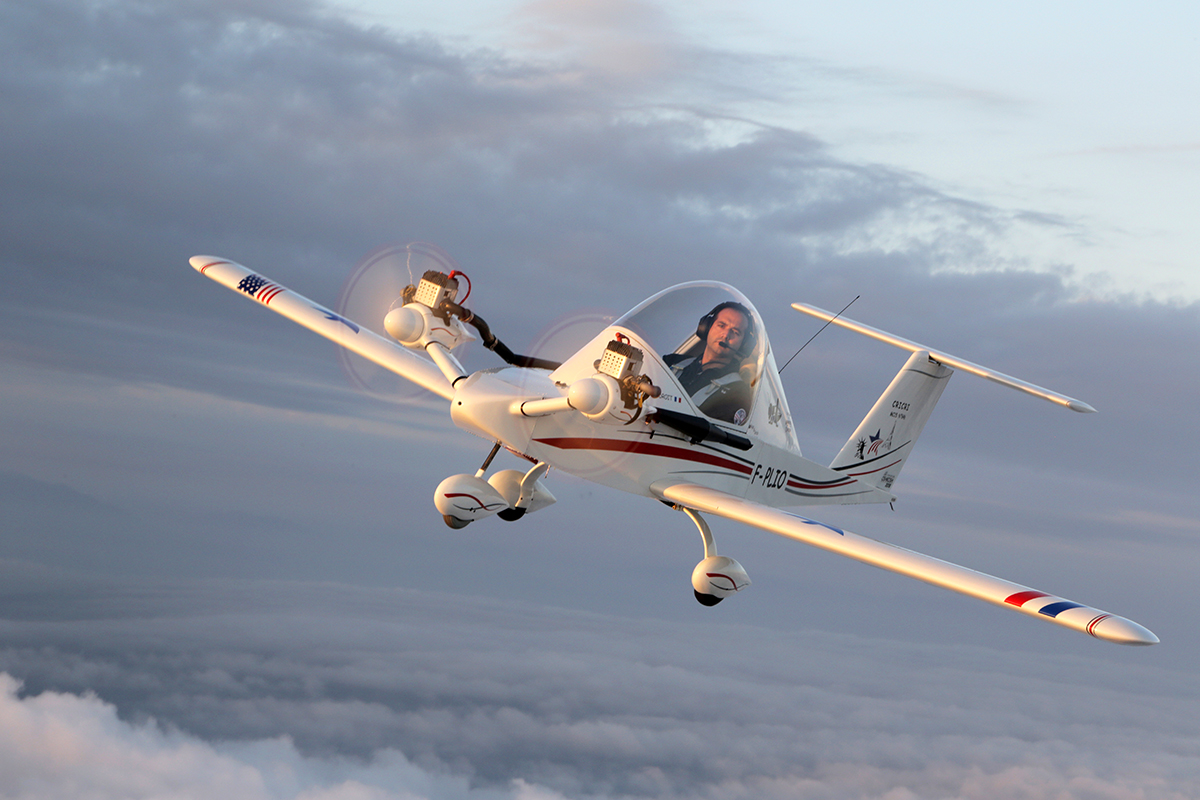Colomban MC-15 Cri-Cri
Conceived in the early 1970s by French aeronautical engineer Michel Colomban, the MC-15 Cri-Cri was given the nickname of his daughter Christine. The homebuilt aircraft design is based on Klegecell foam with aluminum glued over it. The Cri-Cri features tricycle landing gear, a bubble canopy and two engines mounted on nose pylons.
The Cri-Cri made its first flight in 1973 and since then continues in widespread use as a private sport aircraft.Its normal propulsion, from two 15-hp JPX PUL 212 single-cylinder engines driving twin-bladed propellers, gives it a top speed of 140 mph, a cruising speed of 120 mph, a range of 310.6 miles and a maximum altitude of 12,000 feet. Wingspan is 16 feet 1 inch and length 12 feet 10 inches. The aircraft weighs just 172 pounds empty and 375 loaded.
In June 2010 a Cri-Cri appeared at the Green Aviation Show at Paris–Le Bourget Airport with four brushless electric motors, making it among the smallest four-engine aircraft ever built. It also featured a modified airframe using composite materials. On September 5 of that year Electravia used a modified, lightened Cri-Cri powered by two 25-hp electric motors to set a world speed record for its category of 162.33 mph. On July 9, 2015, the Electravia Cri-Cri became the third electric-powered airplane to fly across the English Channel, hours ahead of its then-rival for the honor, the Airbus E-Fan, although the Cri-Cri had to be towed aloft before setting off on its own.
Yet another Cri-Cri variation features two PBS VB TJ20 jet engines generating 47 pounds of thrust each. Given its homebuilt status, performance varies among all the Cri-Cris, but most are capable of climbing with one engine out.

